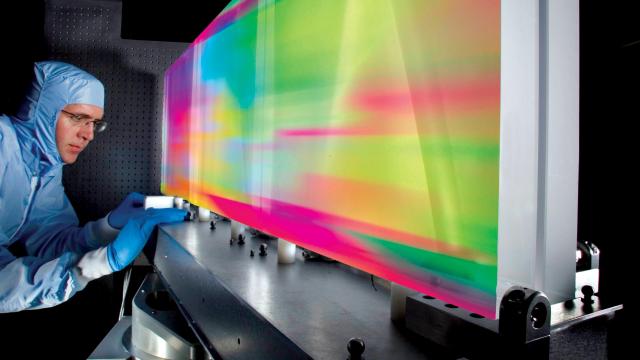Ask Ethan: Will The End Of Our Universe Give Rise To A New One?
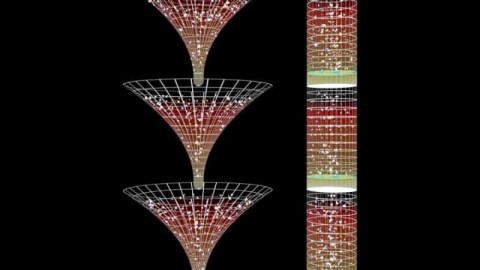
Has all this happened before, and will all this happen once again?
There are only a few questions, when we ask them, that force us to reckon with the fundamental nature of existence. Where did our Universe come from? Can anything ever leave our Universe, and if so, will it ever re-emerge elsewhere? Are we truly bound by the second law of thermodynamics, indicating that entropy must forever increase in our Universe, no matter what we do, or is there a loophole? And, at the end of it all, what will happen to matter, energy, space and time once the heat death of our Universe occurs?
These questions aren’t yet answerable in full today, even with all the knowledge we’ve gathered over the years. Still, they’re not only worth pondering, but one of them hit my radar this week courtesy of Steve Harbert, who wants to know:
“When our universe ends, will a new universe start in all the new empty space?”
This is a fascinating possibility, and one we must consider. Here’s what we know today about the opportunity for our Universe to be reborn again.
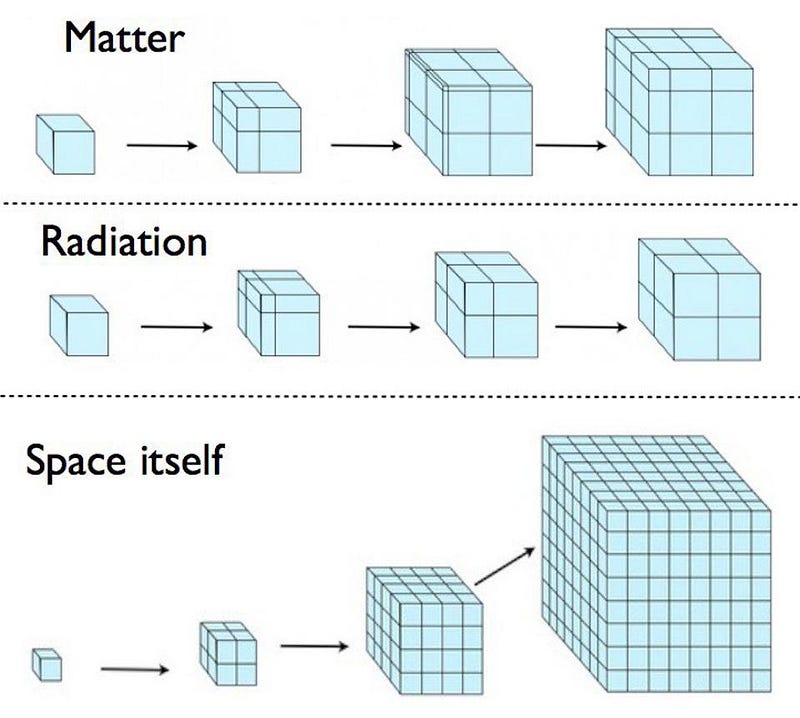
There are two incredibly powerful tools that — when we combine them — allow us to learn what it is that makes up the Universe. The first tool is Einstein’s General Relativity, and in particular the exact solution for a Universe that’s uniformly filled with “stuff.” The second tool is the ability to identify the distances to and recession velocities of various objects at a variety of times in the Universe’s history.
Based on only these tools, we can conclude:
- what the Universe is made of,
- what fraction of energy is in every different component,
- and how those fractional energy densities will evolve with time.
Early on, for example, the Universe was mostly radiation: in the form of photons and neutrinos. Later on, it was mostly matter: in the form of dark matter and normal matter. And only recently, cosmologically speaking, has dark energy come to be the dominant component of the Universe, but that’s going to become even more severe as time goes on.
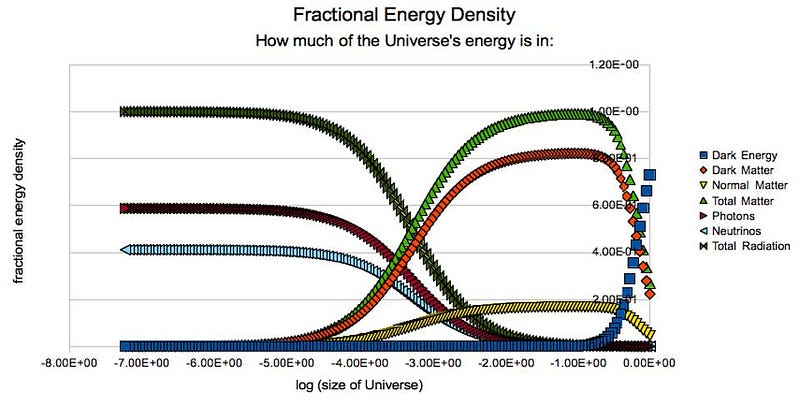
Most forms of energy — like matter or radiation — are based on particles: quanta of energy. As the Universe expands, the volume increases, but the number of particles within it stays the same. For both matter and radiation, that means the density must go down: if you have the same amount of “stuff” but the volume is larger, your density is lower.
But dark energy is different: it’s a form of energy inherent to space itself. As the Universe expands, the volume increases, while the energy density (the energy per unit volume) remains constant. This difference is important. Normally, as the Universe expands and the energy density drops, the expansion rate drops too; the Universe expands more slowly as time goes on. But if the energy density remains constant, the expansion rate will not drop, but will remain at a constant, relentless value.
This leads to exponential expansion, where eventually every unbound object in the Universe will accelerate away from every other object, leading to an expanding, but empty, Universe.

Those of you who are familiar with modern cosmology might recognize this description — of a relentlessly expanding Universe that was filled not with matter or radiation, but with energy intrinsic to space itself — from a different point in our history. This is precisely what we believe occurred during cosmic inflation: an exponential expansion where energy inherent to empty space dominated. Eventually, that energy underwent a transition, from being inherent to space to being “dumped” into particles and antiparticles: an event we now identify as being the onset of the hot Big Bang.
Many have speculated, over the years, that these two time periods might be related. If our Universe began from the aftermath of the expanding nature of empty space, and will end in a state, once all the galaxies and black holes have decayed away, of expanding, empty space as well, could the end of a Universe actually correspond with the birth of another Universe? Could our Universe have arisen from the death of a prior one, and could the death of our Universe herald the beginning of a new one?
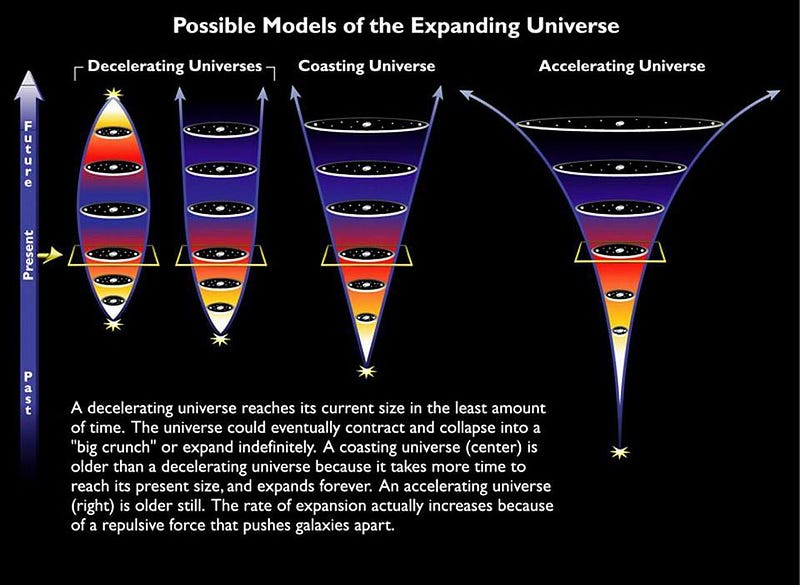
Your first thought might be to object on the grounds of thermodynamics. After all, the second law of thermodynamics tells us that entropy always increases, and yet the idea that things would be “the same” at the beginning and the end of the Universe clearly doesn’t fit within that idea.
At a variety of epochs throughout the Universe, for instance, we can calculate the entropy of the Universe in terms of k_B: Boltzmann’s constant. At the start of the hot Big Bang, immediately after the end of inflation, the entropy was ~ 10⁸⁸ k_B, which is a big, but finite, number. Back then, entropy was dominated by radiation. Today, 13.8 billion years later, the entropy is much higher: more like ~10¹⁰³ k_B, where the entropy is dominated by black holes. (In fact, the black hole at the center of our Milky Way, all by itself, has an entropy of ~10⁹¹ k_B: bigger than the entropy of the entire Universe at the Big Bang.)
By the time dark energy brings us, effectively, to the end of the Universe, the entropy will be a whopping 10¹²³ k_B: some 35 orders of magnitude larger than it was at its start. But you have to remember that there’s a big difference between entropy, which always increases, and entropy density, which can decrease in an expanding Universe. As long as the total entropy increases, we’re ok in the eyes of the second law of thermodynamics.
That leaves, to the best of our knowledge, four possibilities for how a new Universe could begin from the “ashes” of our own.
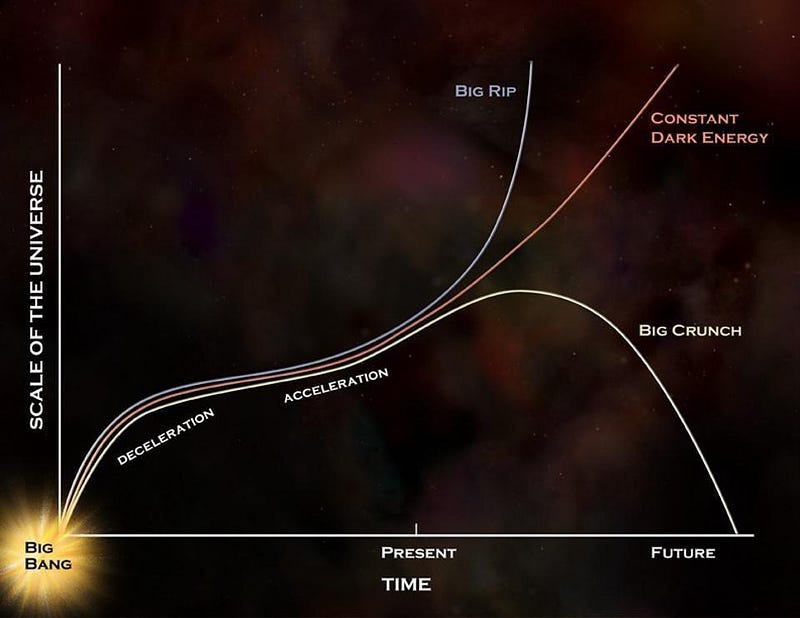
1.) The Universe could recollapse. It’s true that dark energy seems to be some sort of energy inherent to space itself, causing the Universe to not only expand, but for the expansion to accelerate. However, we have no proof that the strength and sign of dark energy will always remain a constant. Sure, the best evidence we have is consistent with that, but we must remain open to the possibility that dark energy evolves over time.
If it does, one of the plausible scenarios is that dark energy decays away into some other form of energy, while another is that it eventually reverses in sign: from positive to negative. If either of these scenarios occurs, it’s possible — in the case of sign reversal, even likely — that the Universe’s fate will be altered. Instead of expanding forever until the Universe is cold and empty, the Universe will cease expanding, begin contracting, and recollapse.
While this could lead to a number of outcomes, including a “new Universe” rising from the remnants of the old one, it wouldn’t arise from empty space, but from all the matter and energy recollapsing into a point.
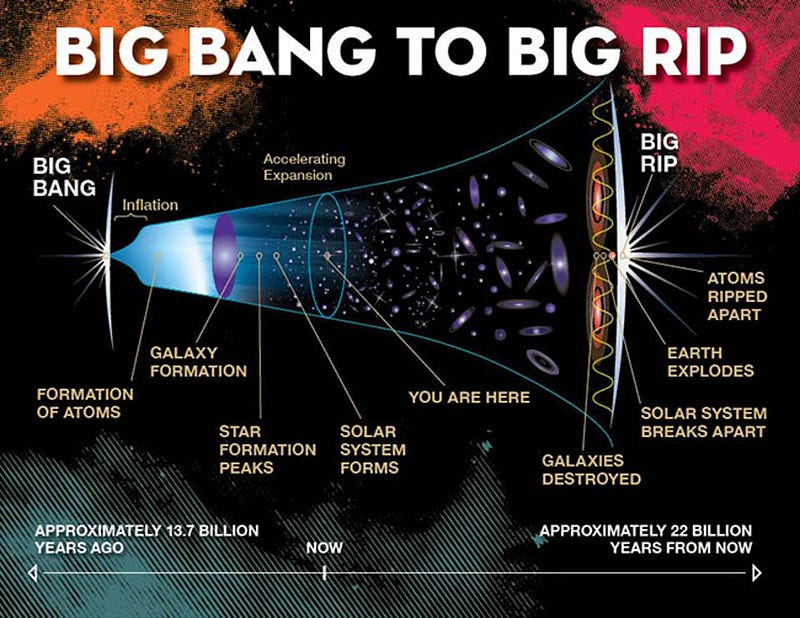
2.) The Universe speed up in its expansion due to strengthening dark energy, triggering a rebirth. Oddly enough, however, the exact opposite of this scenario could result in a new, reborn Universe as well. What if, instead of remaining constant, dark energy gets stronger over time? The energy inherent to space wouldn’t just remain at a constant energy density, but the energy density — the magnitude of dark energy in any region of space — will actually increase over time.
Because of the relationship between space, time, the Universe’s expansion, and the energy density of everything in the Universe, this causes the expansion rate to grow and grow over time, without an end in sight. At some point, the expansion rate can be as large as it was during the stage of cosmic inflation that preceded the Big Bang. As long as the energy in space itself then decays into particle and antiparticles, we could trigger another hot Big Bang.
Excitingly, the science goal of NASA’s upcoming Nancy Roman Telescope, formerly known as WFIRST, is to measure whether dark energy changes over time, and if so, how, to the greatest precision ever: down to ~1% variations from a true cosmological constant.
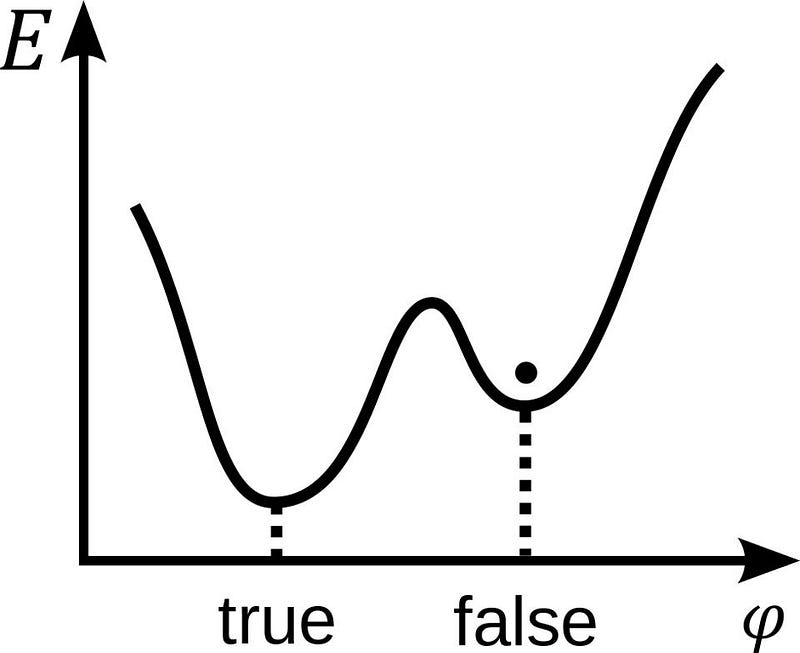
3.) Perhaps dark energy could decay, triggering the onset of a very different Universe. This one usually goes by a shorter name: vacuum decay. For some reason, we have a Universe with dark energy in it, where the energy inherent to space isn’t zero, but has a positive, non-zero value. You can imagine that this is because we’re not at the bottom of a hill, but rather in what we call a false minimum: a low point — like a valley — but not the lowest of all possible points.
If the Universe weren’t quantum in nature, we’d simply remain in the valley. However, in a quantum Universe, it remains possible to “quantum tunnel” into the true minimum: an even lower energy state. If that occurred, however, a number of things would go bonkers.
- The laws of physics and the values of the fundamental constants would change.
- The energy previously inherent to space would drop.
- Which would cause new quanta, like particles and antiparticles, to get “ripped” out of the vacuum.
- Which would trigger a new Big Bang, albeit one much lower in energy, colder, and less dense than the original.
Perhaps it would take trillions of years for even a single atomic transition to occur in this new Universe, but if we’ve learned nothing else from Einstein, it’s that time, like space, is relative to the observer.
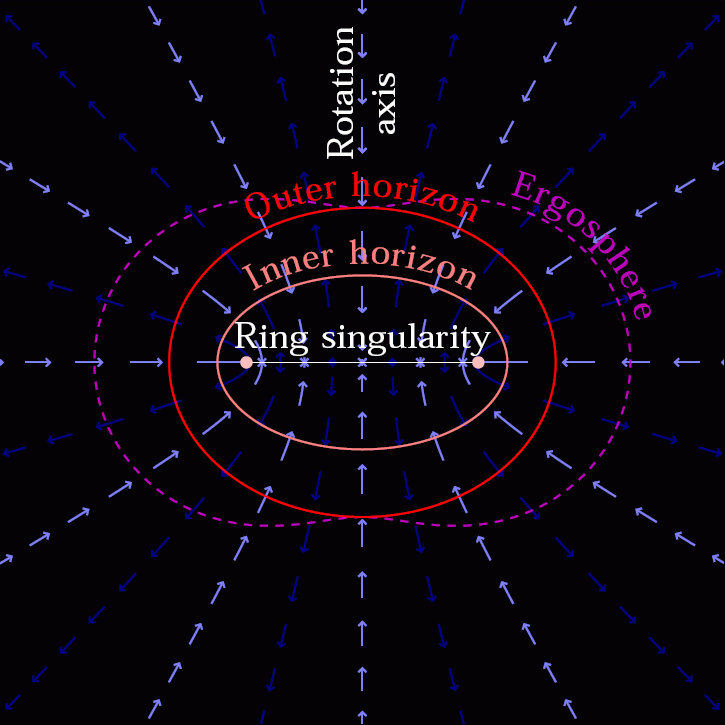
4.) Black holes could be “gateways” to other Universes. This one is perhaps the most exciting idea, but it could be inevitable. At the center of every black hole is a singularity: a point where time and space break down. However, if your black hole rotates, that singularity get smeared out into a “ring,” or a one-dimensional circle. If you fall into a rotating black hole, some very interesting theoretical physics calculations suggest that you never reach the singularity, but that rather once you cross the event horizon, what you experience is eerily similar to cosmic inflation, and would lead you into a new Universe.
Although we have no known way of testing this scenario, it leads to a number of fascinating possible connections. Could the decay of a black hole, via Hawking radiation, emulate what you see within the Universe as dark energy? Could the inflationary epoch that started our Universe off have arisen from a black hole in an earlier Universe forming for the first time? And, if we could fall into a black hole and somehow survive the journey, would we find ourselves in another Universe wholly different from our own?
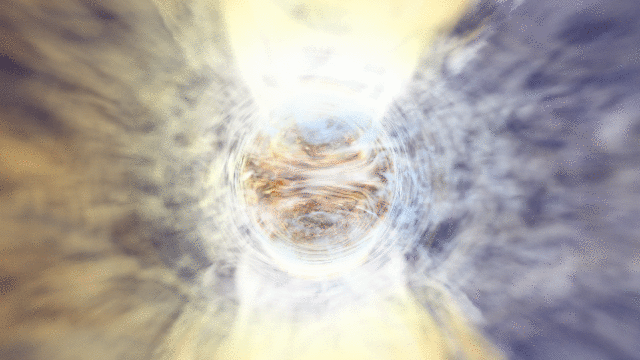
As it stands today, the best evidence indicates that dark energy is a constant, that it won’t flip signs, weaken, strengthen, or decay, and that black holes are one-way tickets to oblivion. We fully expect that the Universe will continue expanding with a constant energy density, with distant, unbound objects receding from one another at ever increasing speeds. As the stars, galaxies, and even black holes within it decay, our Universe becomes quieter and quieter, with all activity eventually succumbing to the heat death: where no more energy can ever be extracted from anything.
But a great many fascinating outcomes that differ from the standard scenario are still in play, and could yet come to pass. If dark energy evolves or the vacuum decays, a new state — rich in particles — could emerge. If some of the wilder theoretical physics ideas surrounding black holes turn out to be true, they could be windows or even gateways into other Universes. And if there’s a connection between dark energy and inflation, perhaps our Universe isn’t the first of its kind, and perhaps it won’t be the last of its kind, either. When we stand at the edge of the frontiers of the unknown, we are compelled to gaze out in wonder, open to every possibility that is not yet ruled out. With greater amounts of superior data, we just might find something that revolutionizes our view of how it all will someday end.
Send in your Ask Ethan questions to startswithabang at gmail dot com!
Starts With A Bang is written by Ethan Siegel, Ph.D., author of Beyond The Galaxy, and Treknology: The Science of Star Trek from Tricorders to Warp Drive.





